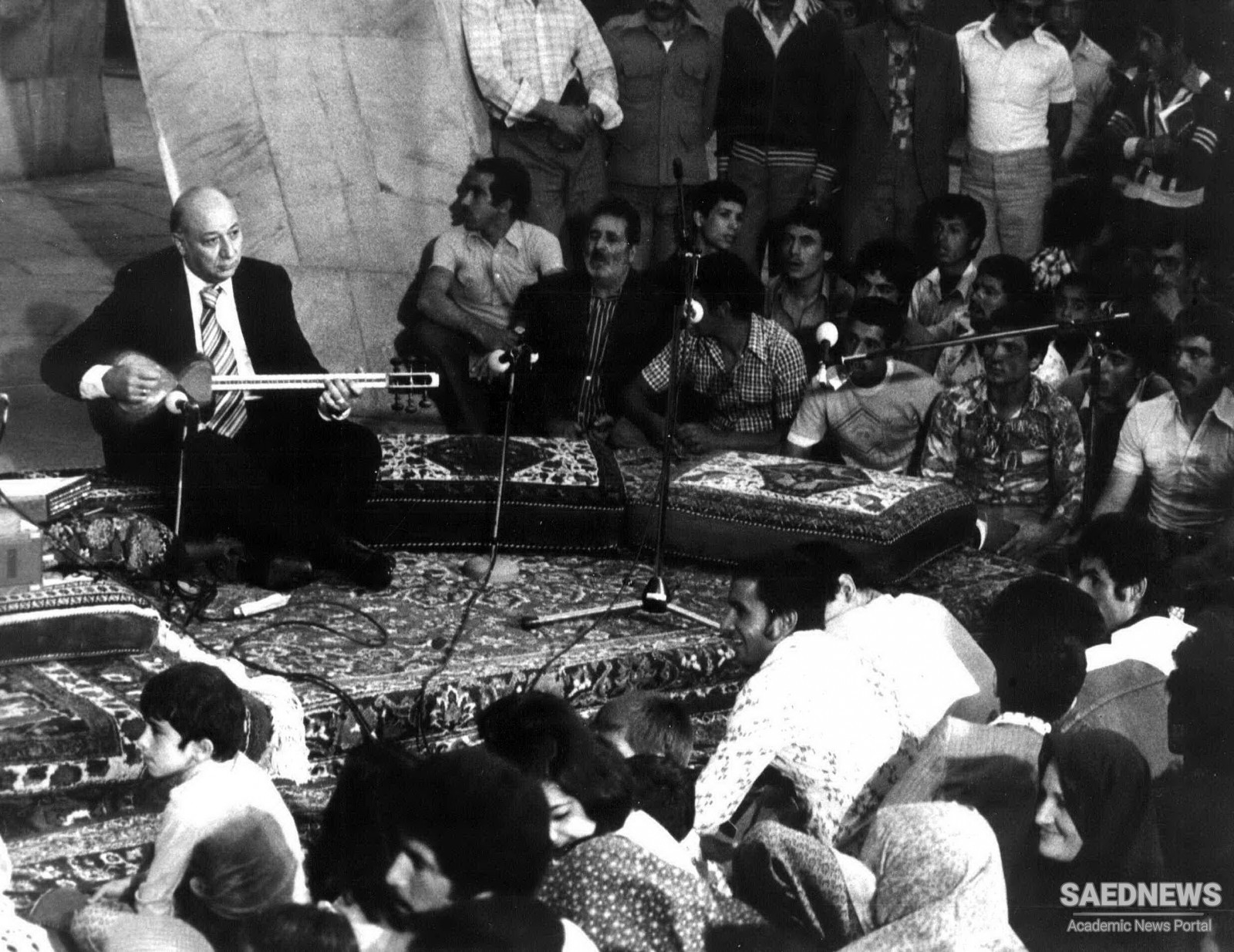Many folk melodies are included among the gusheh of Dashti: Gilaki, Dashtestani, Bayat-e Kord, and Chupani (a shepherd), to name a few. Moreover, it is generally felt that a large percentage of the folk music heard in Iran has the same "feeling" as Dashti and may even have a similar scale and melodic shape. In fact, Barkechli states that Dashti is the basis of musical folklore in the northern provinces. The name, however, comes from the region of Dashtestan in the south.
Theorists usually write the Shur scale for Dashti with the third degree as ist and the fifth as shahed. Transposed to C, the Dashti scale is the same as that of Bayat-e Tork : C D E F G A B " C. For the daramad of Dashti there is unusual consensus in the sources. All transposed versions start on C, the ist, and rise to stress the shahed E. Even the rhythmic figure at the opening is the same for three of the four examples. A second rise goes as high as the fifth. At the close is a long descent, not back to the C, but down another third to the ist of the parent dastgah Shur. The Saba version is noteworthy since it rearranges the melody somewhat while preserving these essential features. To stress the final descent, the shahed is lowered by a quarter tone in all versions. It is thus a moteghayer. Note that this change necessitates a change of register in Example 38, which is for santur.
In another frequently played version of the melody of Dashti, the opening contains a prominent rise of a fifth from the ist of Shur to the shahed of Dashti. (In this transposition of Dashti the ist of Shur is a, and the fifth is a to e'.) A simple melodic outline for this version is shown in Example 39, but a more customary opening is a leap of a fifth, rather than a filled-in interval, as shown by the melody of Example 40.
The most important gusheh in Dashti is Oshaq (lovers) on the upper sixth degree. This degree is also an octave above the ist of Shur. For the gusheh of Oshaq, the fifth degree of Dashti is lowered by a quarter tone. Rast kuk for Dashti is F for tar and sehtar, B-flat for santur, and C for violin. The melodic shape of Dashti is well illustrated by one of the composed forms of Persian music outside of the radif, the tasnif. In the transposition used in Example 41, the ist of Shur is b, that of Dashti is d' and its shahed is f#'. The opening measures show the leap of the fifth from the ist of Shur to the shahed or third of Dashti. The changing of this note by a quarter-tone inflection appears in measure 5, where the f-sharp becomes f-sori. In measure 30, the leap up to b' indicates a movement toward the gusheh of Oshaq, but the melody returns immediately to Dashti and closes in Shur.


 Persian Classic Music: The Dastgah Shur
Persian Classic Music: The Dastgah Shur














































